1lumen selects and reviews products personally. We may earn affiliate commissions through our links, which help support our testing.
XTAR VC4SL review: battery charger
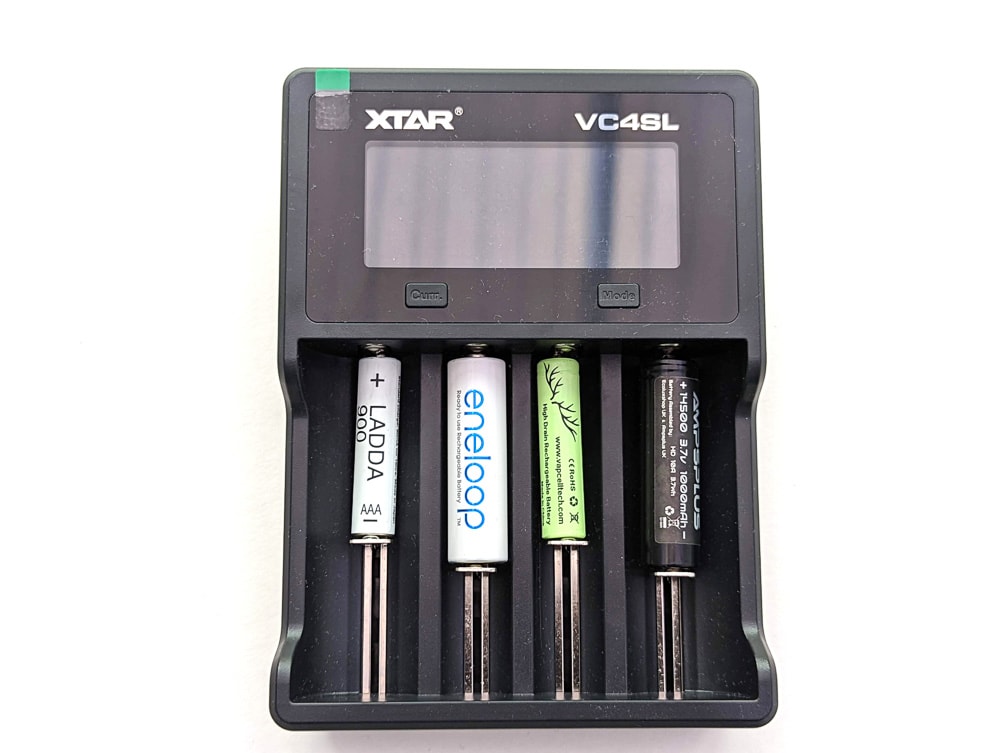
XTAR VC4SL specifications
| Brand/model | XTAR VC4SL |
|---|---|
| Input | USB-C QC3.0 |
| Input Voltage | 5V 3A / 9V 2A |
| Max charging current | 3A |
| Battery slots | 4 |
| Battery chemistries | Li-ion / NiMH / NiCad |
| Battery compatibility | AAAA, AAA, AA, A, SC, C, D 10440, 14500, 14650, 16340, 17335, 17500, 17670, 18350, 18490, 18500, 18650, 18700, 20700, 21700, 22650, 25500, 26650, 32650 |
| Review date | April 2022 |
Introduction:
XTAR have been around for a few years now and are well known in the flashlight (and vaping) community for their chargers.
The VC4SL is an upgrade to the VC series of chargers. I have the original VC4, with the 4 denoting space for 4 cells. The SL version is a big upgrade, with the main difference I’m interested in being the USB input and the ability to charge longer cells, like protected 21700 cells.
XTAR have released a few other chargers in the VC series, including the VC4L, VC4H, VC4S and VC4 Plus. They also have the VC2 and VC8 ranges, with space for 2 and 8 cells respectively.
Package quality.
The VC4SL comes in a standard printed cardboard package. XTAR also included an 18W USB wall charger in a separate box. XTAR kindly sent me a UK plug version but they come in US and EU versions too.
Inside the box you get:
- XTAR VC4SL charger
- Carry bag
- Manual
- USB-C cable

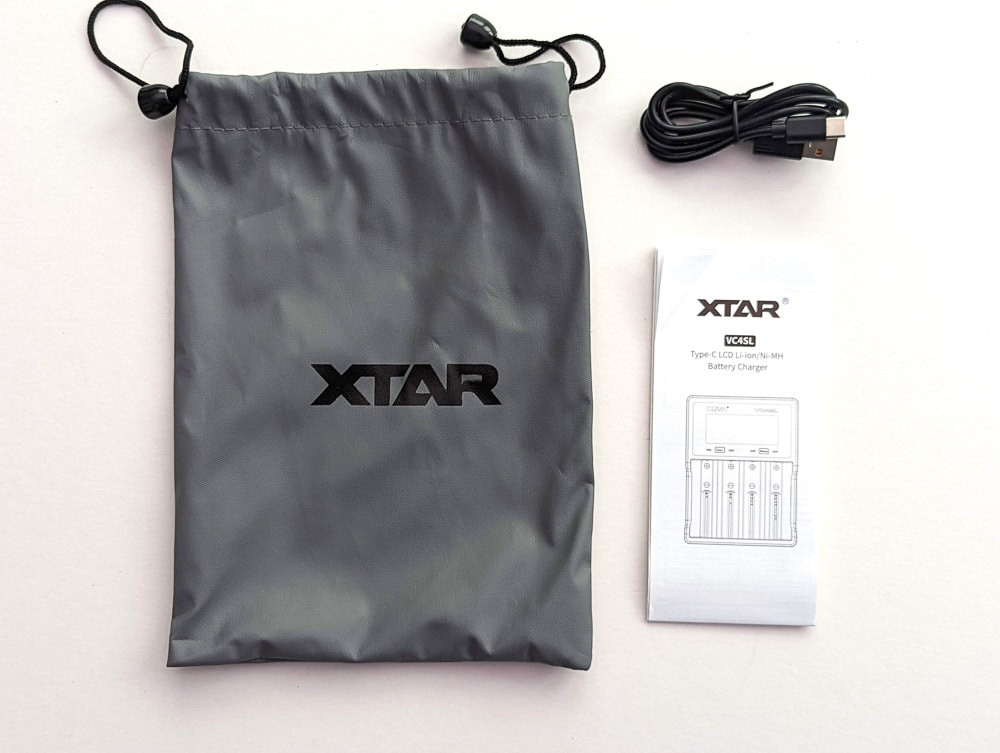
Build Quality, and Warranty
Unlike their PB series which is designed to be used outside and carried on the move, the VC series are designed to stay indoors.
The plastic seems robust and the display is nice and clear.
The display shows voltages to the nearest 0.05V. It was pretty accurate but some cells were almost 0.1V out when I checked with a multimeter.
On chargers like this, the main point of concern is the mechanical slots. XTAR uses springs that take a moderate amount of force to move and easily hold batteries in place. The shortest length they can hold is 30.2mm and the longest is around 77.4mm. I didn’t see any issues with the springs or the tracks.
Warranty: XTAR provides a 15 free replacement warranty and a 24 month free repair (but charging for parts)
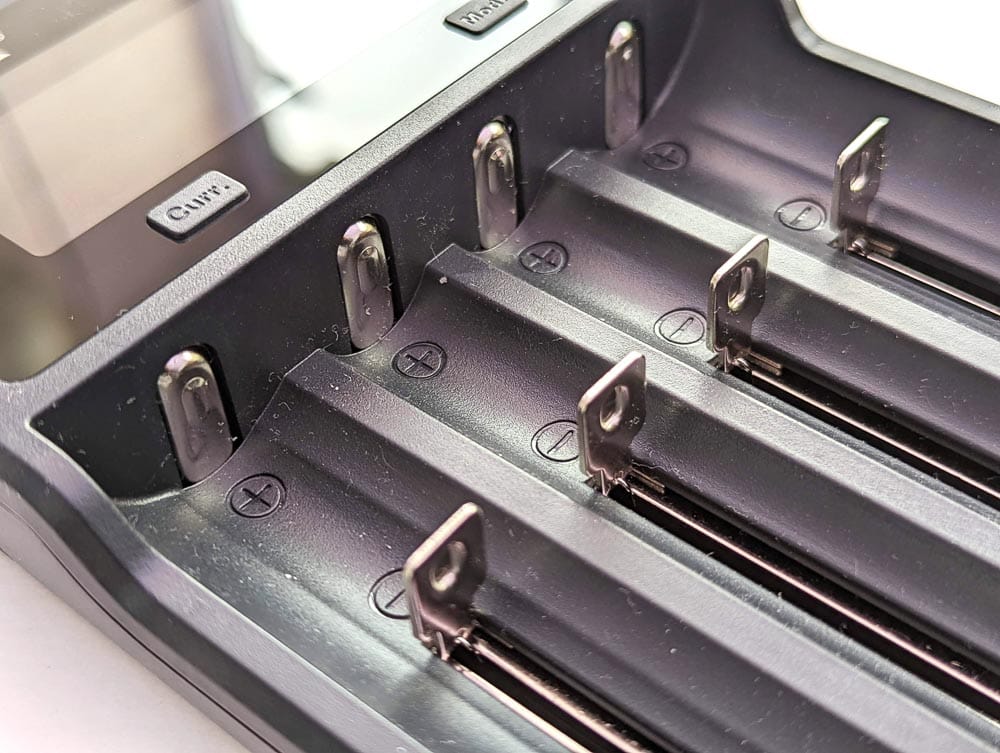
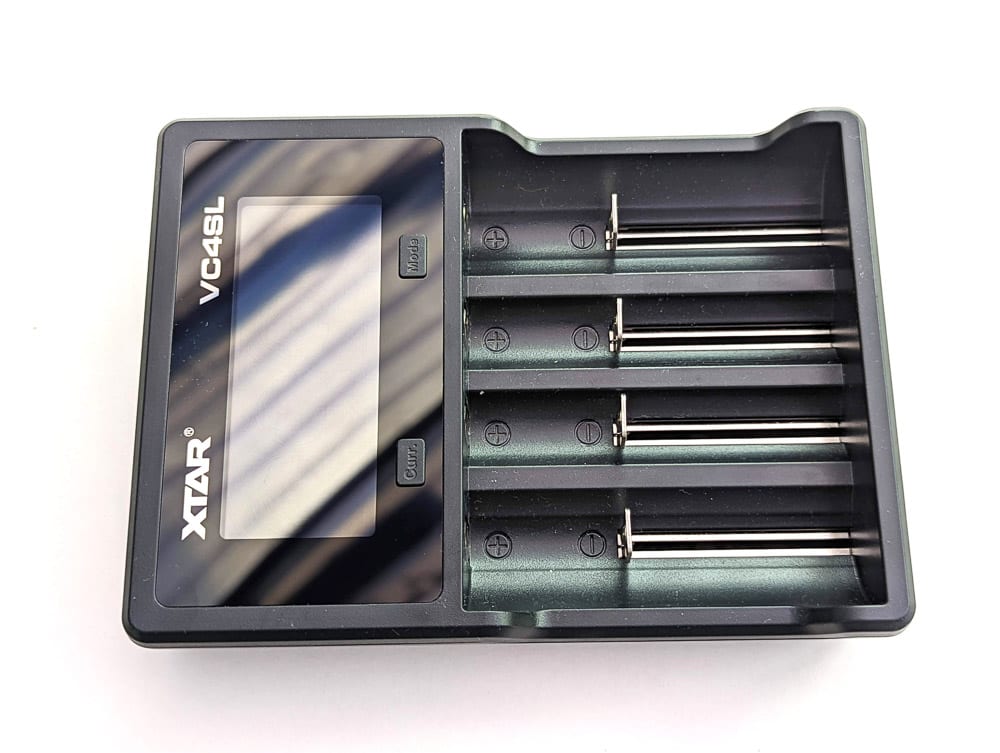
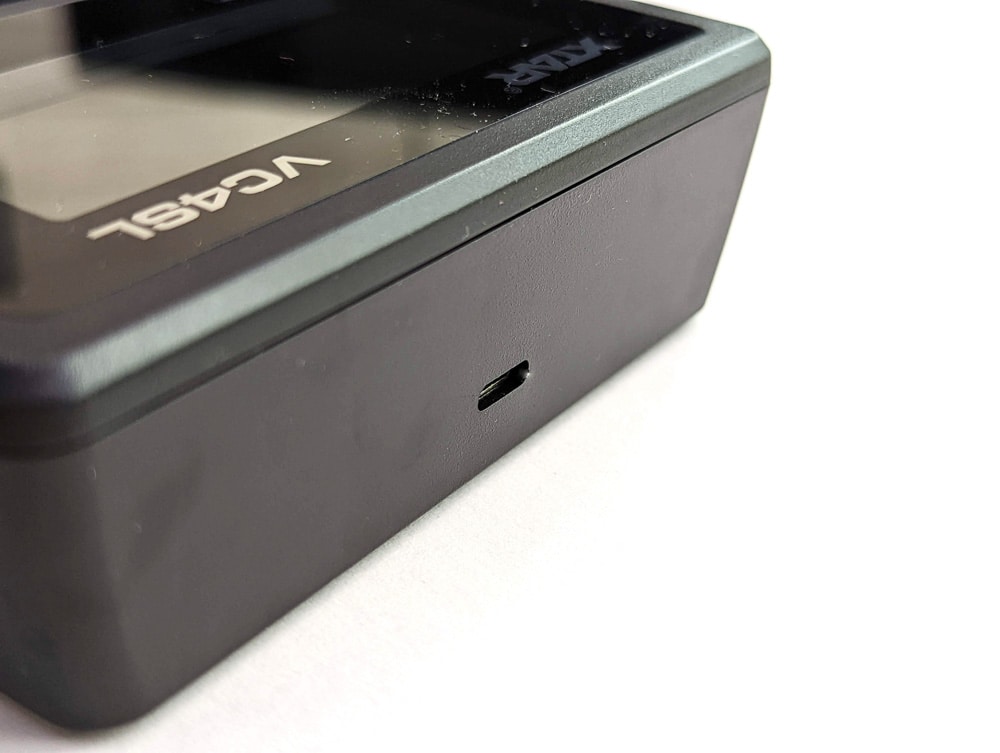
Basic Charger usage:
Plug the USB-C cable into the VC4SL and any USB power source and the display will light up. You can put pretty much any rechargeable battery into a slot and it will start charging. The charger will work out the fastest speed it can charge, without damaging the battery (eg 3A for a big 21700 and 260mAh for a tiny 10440). For basic charging, there’s no buttons to press or options to select.
The VC4SL can take either Ni-Mh batteries like the venerable Eneloop AA or li-ion cells, common in more high power devices. In fact you can mix and match the different battery chemistries and it’ll handle it just fine. Right now I’m charging a pair of Ni-Mh and a pair of 18650 batteries.
Each slot that has a battery will light up either red for charging or green for fully charged. The display also gives charging information:
- Current battery voltage (V)
- Charging current (A)
- Capacity that’s gone into the cell (mAh)
You can take the batteries out while they’re charging, or wait for them to finish.
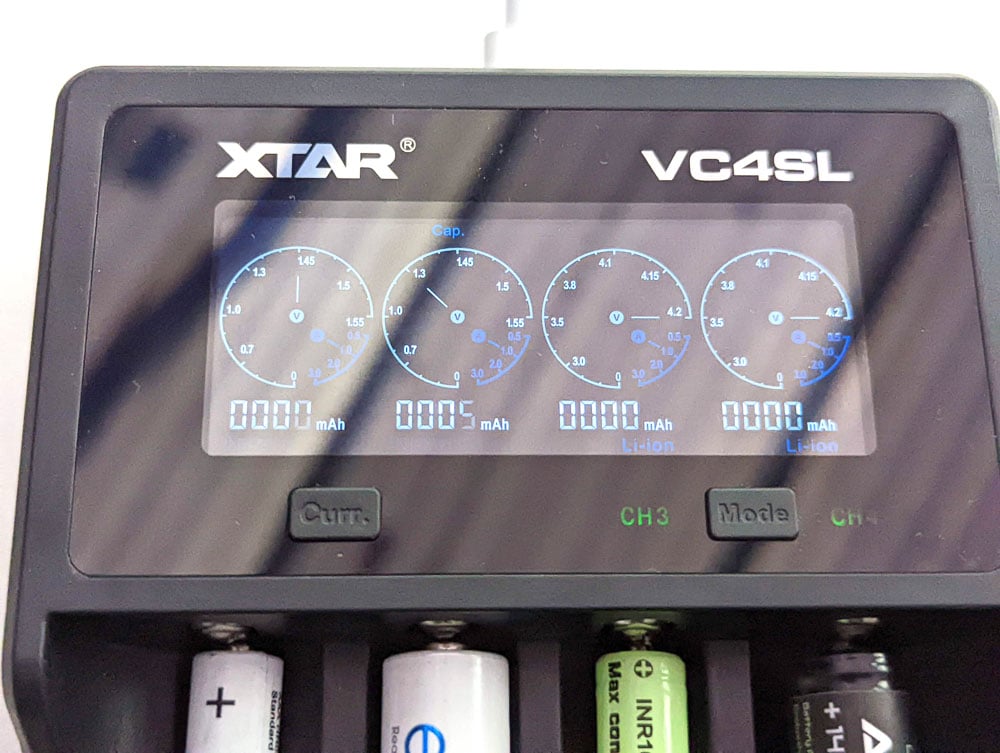
Advanced Charger usage
The VC4SL works great as a basic charger but it has a few extra ticks up its sleeve.
Fast charging
The VC4SL can charge a single cell with a current up to 3A. This will fully charge a 21700 cell in about an hour and a half. It can’t do more than one cell at 3A at a time though: if you put in 2 cells then it will charge them at up to 2A each (4A total) and 4 at a time only goes up to 1A.
To charge at this speed requires a USB-C source with QC, supplying around 18W. A C-to-C cable works fine too. The VC4SL was also happy charging from a regular USB-A, though only charging at 2A. This is a big advantage over my older VC4, which uses a DC barrel connector. USB-C means you can power it from a phone charger or laptop.
Displaying cell info
Whilst the cell is charging, press the right Mode button to cycle between different information.
- Capacity – mAh that have gone into the cell whilst charging
- Charging current – mA, essentially the charging speed
- Internal Resistance – mΩ, an estimate that shows the health of the cell
The internal resistance of a cell changes based on current, state of charge and temperature. The charging track will also have its own resistance, so take the number with a grain of salt. Still, the mΩ given is a good guide. Very broadly, anything under 50mΩ is good and anything over 150mΩ is bad. You can also use this to check paired cells are still matched.
Limiting charge speed
When charging, press the Curr button to cycle between charging currents, from 250mA up to 3A. If you have plenty of time then a lower charge rate will make the cell last a bit longer. The VC4SL will also do its own limiting, based on what the battery can take. When I put the 10440 cell in with it set to 3A charging, the VC4SL sensibly charged it at 260mA instead.
Note that when the VC4SL loses power then it will forget the charge speed that you set.
Grading mode
Hold down the Mode button and the charger will switch to grading mode. This will fully charge the cell, then discharge it fully, then charge it back up. At the end of the cycle it will show the cell’s capacity in mAh.
Storing mode
Hold down the Mode button again and it will go to storing mode. This will either charge or discharge the battery getting it to the best voltage for long term storage. This is 3.7V for li-ion and 1.2V for Ni-MH.
Reviving cells
In some cases, the VC4SL can charge cells that have been completely drained. It successfully charged a 18650 cell I had that had dropped down to 2.7V but I didn’t have any completely dead ones to test.

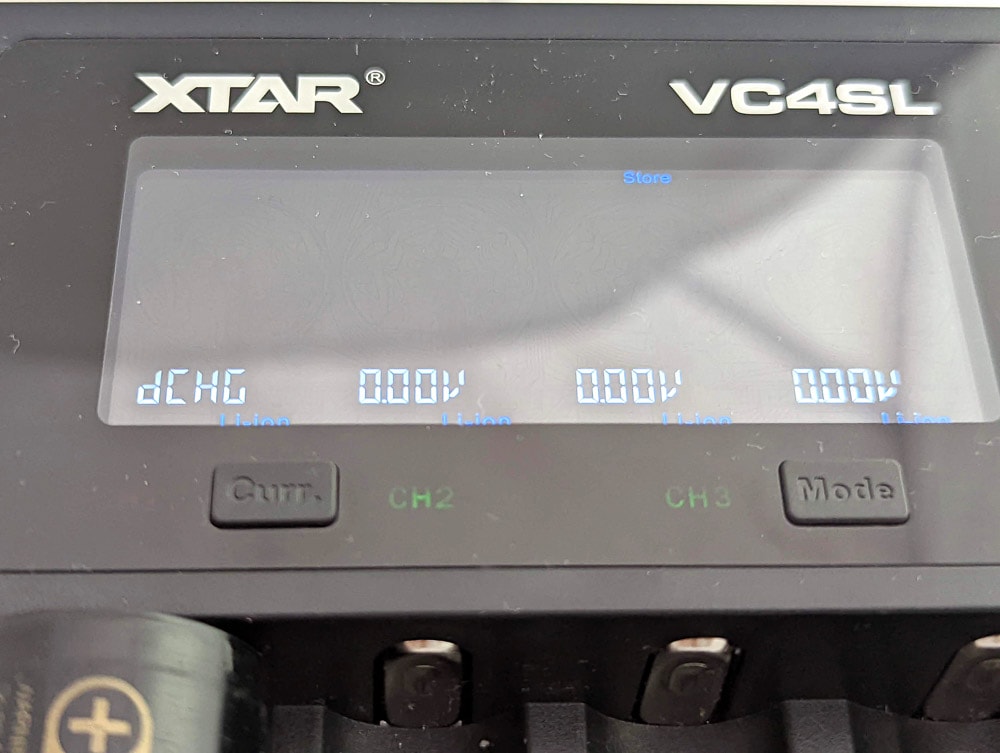
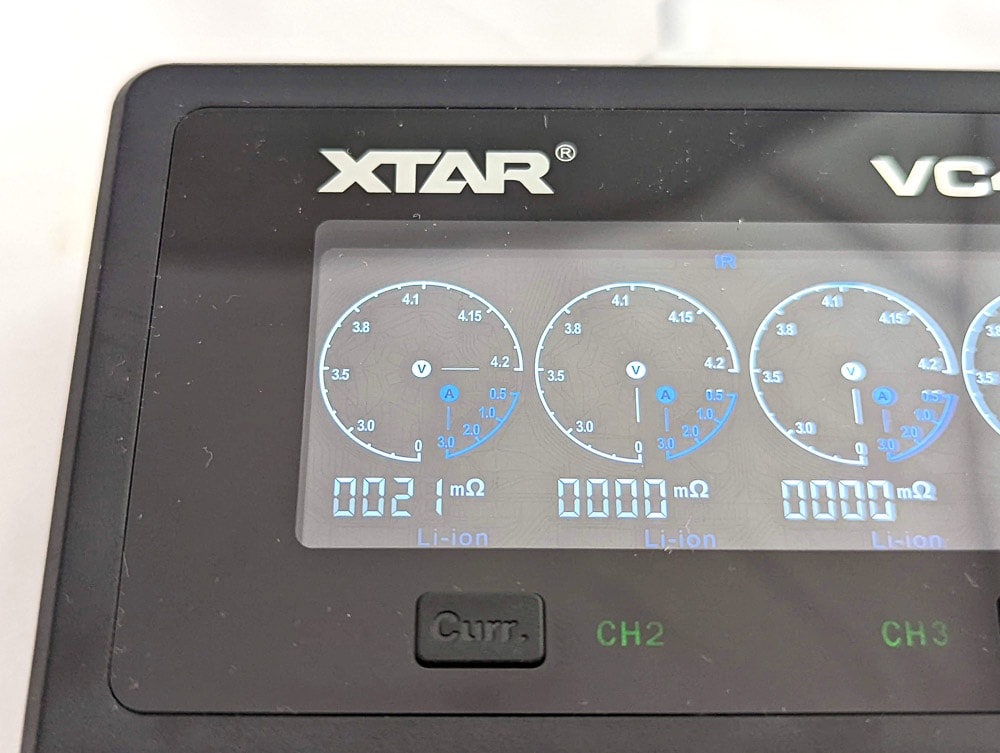
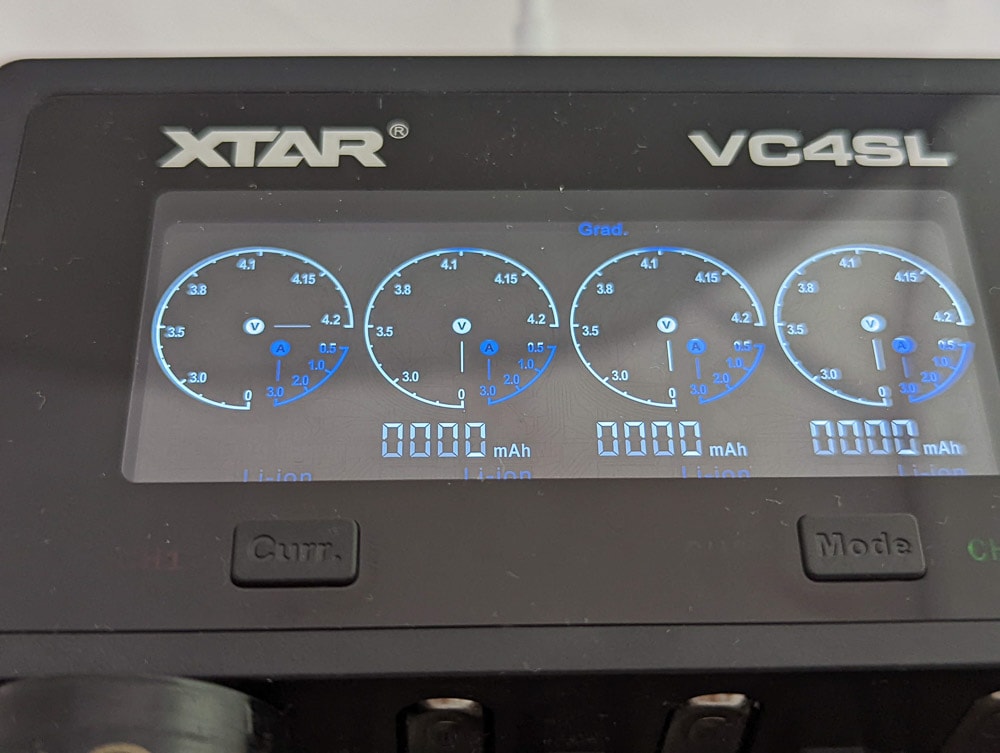
Battery Compatibility
XTAR gives a long list of batteries that work with the VC4SL, including a few that I’ve never heard of.
- Ni-MH / Ni-CD: AAAA, AAA, AA, A, SC, C, D
- Li-ion / IMR / INR / ICR: 10440, 14500, 14650, 16340, 17335, 17500, 17670, 18350, 18490, 18500, 18650, 18700, 20700, 21700, 22650, 25500, 26650, 32650
It happily took AAA, AA, 10440, 14500, 16340, 18650, 21700 and 26650 batteries that I have.
26800 cells are unsupported. I attempted to squeeze in a 26800 cell and it didn’t quite fit. If the charger was just a couple of mm longer then it’d fit. XTAR is working on a charger to support these new cells, as well as 90mm cells.
Aside from the 26800, the longest cell I have is a 76.4mm long 21700 cell with its own USB-C port built in. This fits in the VC4SL easily, which is a vast improvement to my aging VC4 charger, which struggles even with flat top 21700 cells. The VC4SL was also happy with protected 21700 cells from Imalent and an Astrolux 21700 with built-in micro-USB charging.
In terms of width, I don’t have any 32650 cells to test but 26650 cells were fine. 26650 cells won’t fit in the middle 2 slots, so you’ll have to use the outer 2. The VC4SL will fit 4 21700 cells all next to each other, or even a pair of 26650 and a pair of 21700.
The shortest cell that works was a 34mm long 16340 cell. The only cell shorter than that that I have is an 18mm long 10180 cell for the GT Nano. The VC4SL won’t charge this.
The XTAR VC4SL can be set to charge at a low current of 250mA. The lowest capacity cell I have is a 320mAh 10440 cell – charging this at 250mA is a charge rate of about 0.8C, which should be fine for most cells.
Charging currents and times
| Cell | Charging current | Charge time | End voltage |
|---|---|---|---|
| AAA (950mAh) | 220mA | 4h | 1.52V |
| AA (2450mAh) | 436mA | 5.5h | 1.53V |
| 18650 (3000mAh) | 3060mA | 1.2h | 4.19V |
| 21700 (4000mAh) | 3060mA | 1.5h | 4.19V |


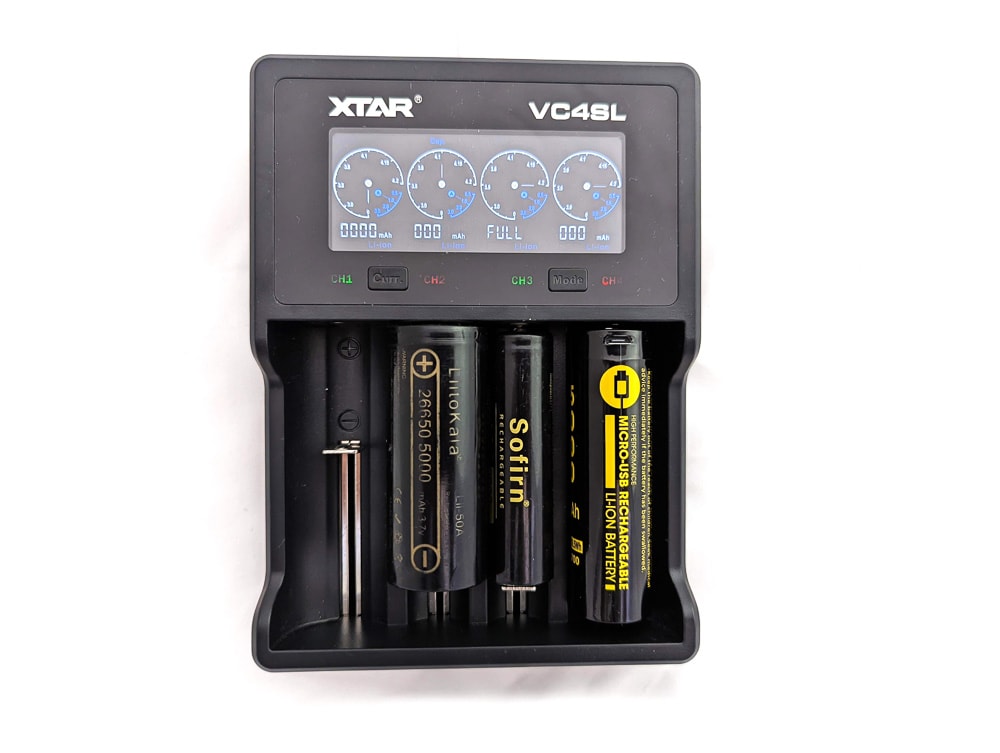

Dimensions and size comparison
Dimensions:
- Length: 15.6 cm / 6.1 inches
- Width: 11.55 cm / 4.5 inches
- Height: 3.5 cm / 1.4 inches
- Max cell length: 7.74 cm / 3.05 inches
Weight:
- 212 grams / 7.48 oz.
Disclaimer: This charger was sent to me for review at no cost by Xtar. I have not been paid to review, nor have I been holding back on problems or defects.
Final Verdict
Pros
- Fits protected 21700 cells and even cells with USB charging
- USB-C input
- Lots of advanced features
Cons
- 26800 cells don’t quite fit
- No way to set max voltage
Explanation on star ratings:
1: Avoid: my phone flashlight would be a better choice – 2: Poor: significant defect or issues; almost unusable – 3: Average: some defects or issues; but still usable 4: Good: recommended (minor issues) – 5: Great: highly recommended

4.5 stars: ★★★★⋆
I’m very happy with the VC4SL. It’s a significant upgrade from the VC4 and an Acebeam branded charger that I have. Being USB-C powered, it furthers my quest to remove all other types of cables and can be mix and matched with any USB power source.
Charging at up to 3A is great, especially if you’re in a hurry. XTAR also caters for people who prefer a more conservative charge speed to prolong the battery life.
I was slightly disappointed that it can only charge a single cell at a time at 3A and only 2 cells at 2A. Of course if you do the math, this is the most you can get from QC3’s 18W power. XTAR also has a 2-slot USB-PD charger that can charge 2 cells each at 4.1A each (8.2A total, around 40W). I’d like to see a USB-PD version of the VC range of chargers some day: 4 bays of 4A might just be feasible with a 65W USB-C power supply.
Being able to take protected 21700 cells is very welcome. My only other charger that can handle these is the Olight Universal Magnetic USB charger, which can only do 1 cell and only at 0.5A, taking 6+ hours to charge. Unfortunately the VC4SL doesn’t quite take the new breed of 26800 cells.
One thing missing is a way to set the maximum charge voltage. A few chargers can do this and I know some people like to only charge cells up to around 4.1V, prolonging their life. Personally I have lots of flashlights with FET drivers that need as much voltage as they can take, so 4.2V is good for me.
Xtar VC4SL discount code
Get 10% off with our unique 1Lumen discount code: 1lumen10
1lumen selects and reviews products personally. We may earn affiliate commissions through our links, which help support our testing.